10 Superfoods You’ve Never Heard Of
Not every healthy food has had its kale moment. Here, registered dietitian Tina Ruggiero recommends 10 foods worth experimenting with. Some are harder to find than others, but all are worth knowing about. Who knows? They could be the next big thing.
 Pomelos
Pomelos
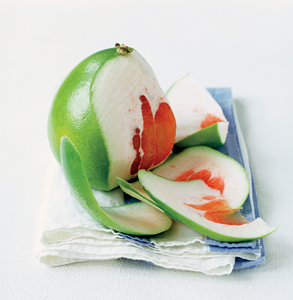
Pomelo
The pomelo looks like a green grapefruit but tastes like a melon with citrus notes. Grown in California, Florida and Texas, pomelos are harvested between fall and mid-spring, so snag one when you see it and eat it as you would a grapefruit: peel, separate the wedges and devour. Pomelos are low in calories, high in fiber, a good source of potassium and loaded with cancer-fighting antioxidants.
 Pu-erh Tea
Pu-erh Tea
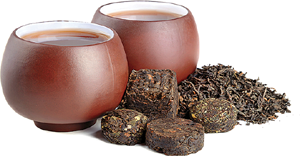
Pu-erh Tea
If you’re a die-hard coffee fan, try some pu-erh tea, a very rich, full-bodied tea with hints of mocha. While it may call to mind black tea, it’s not actually in that class of brews. It’s fermented and aged before being consumed; in fact, this tea is sometimes aged for decades, like wine. It can be found in loose-leaf form or compressed into little cakes called bing cha, and it’s easy to prepare: simply add to water and enjoy. It’s rich in polyphenols and has been associated with improved digestion and cholesterol, though more research is needed to confirm those health benefits. In the meantime? Can’t hurt to try it.
 Limequats
Limequats

Limequats
Limequats are just what they sound like: a hybrid of the lime and the kumquat. These nugget-size fruits are most often found in supermarkets between July and November, and they’re packed with vitamin C and fiber. They can be eaten as you would an apple—rind and all. They also make a tasty substitute for lemons or limes.
 Hubbard Squash
Hubbard Squash
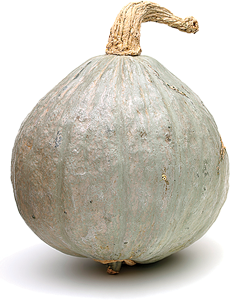
Hubbard Squash
This winter squash is not known for its looks. Instead, its beauty lies on the inside, in the form of succulent, orange-yellow flesh that’s rich in antioxidant vitamins A and C, potassium and fiber. Try roasting it, then pairing it with pasta and kale. It’s also sturdy enough to stand out in a stew.
 Fenugreek
Fenugreek
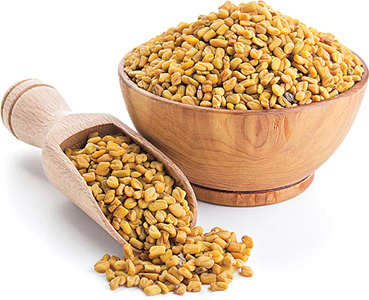
Fenugreek
Fenugreek is very versatile. It’s been called an herb, a curry-scented spice and even a legume, but this plant and its many derivatives isn’t a newcomer. It’s been enjoyed for millennia and is embraced for its culinary and medicinal properties. Fenugreek seeds are rich in minerals like iron, potassium and calcium, as well as fiber and choline. Its leaves can be tossed into salads, and fenugreek extract adds a flavor punch to marinades.
 Purslane
Purslane
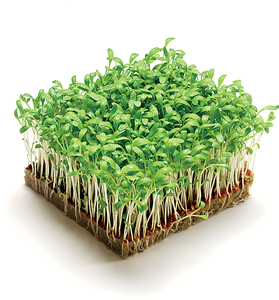
Purslane
Purslane is a weed, like dandelion, and it’s edible, nutritious, and a very popular ingredient in Greek and Mexican cooking. It’s rich in plant-based omega-3 fatty acids and vitamins C and E, and it’s a good source of pectin, a soluble fiber. Its lemony flavor and crunchy texture make it a nice addition to pesto, salads and sandwiches.
 Pluots
Pluots
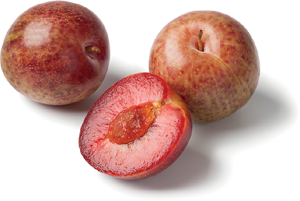
Pluots
These speckled stone fruits are a hybrid of a plum and an apricot. There are more than 20 varieties of pluots with playful names like Emerald Drop, Flavor Grenade and Splash. Pluots are loaded with fiber and vitamins C and A. With just 40 to 80 calories apiece, this naturally sweet fruit is Mother Nature’s treat. Eat it fresh or add it to a salsa or into a simple dinner salad.
 Wakame
Wakame
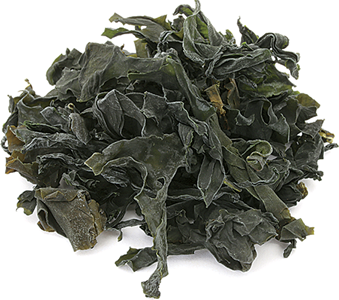
Wakame
Wakame is a seaweed, and while you may not have heard of it, you’ve probably eaten it: it’s the soft, green sea vegetable in miso soup. Wakame, like other seaweed, is dense in micronutrients, packed with trace minerals, low in calories and a rich source of antioxidants. It’s tasty in soups or added to a sauté or salad.
 Teff
Teff

Teff
Teff is tiny but mighty. The North African cereal grass is rich in manganese, iron, fiber, protein, B vitamins and zinc. Teff is also gluten-free, making it suitable for people with celiac disease or a gluten allergy. It’s a key ingredient in Ethiopian injera, a sourdough flatbread. Teff can also be cooked into polenta and enjoyed savory or sweet. One cup of cooked teff has nearly 40% of a day’s worth of calcium and all nine essential amino acids. Add it to porridge, oatmeal or pancakes.
 Celeriac
Celeriac
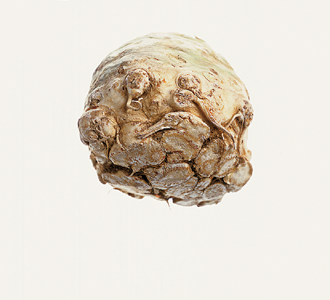
Celeriac
This knobby root vegetable looks nothing like celery, but it has a similar grassy, peppery taste. It’s loaded with vitamins B6, C and K as well as potassium and magnesium. Inexpensive and versatile, celeriac can be eaten peeled and grated raw into a salad with beets, apples and walnuts. It also tastes great boiled or roasted and then mashed into a creamy side dish, just like mashed potatoes.
 Kombucha
Kombucha
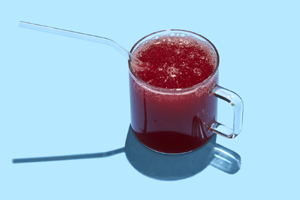
How to drink it
Once a mainstay only at health-food stores, kombucha is increasingly becoming an easy-to-find beverage at grocery store chains and pharmacies. You could also try making it yourself—but if you’re not the DIY type, store-bought brands can be good for you and offer a nice tangy health hit. Just watch out for added sugars.
Why it’s good for you
This fermented drink is rich in probiotics, which benefit the healthy bacteria in your gut, aid in digestion and increase the absorption of nutrients in food.
Nutrition
Most kombucha contains just a small amount of caffeine.
 Lemons
Lemons
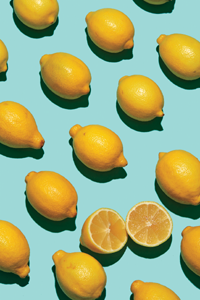
How to eat them
An easy way to get vitamin C into your diet without taking pills is to drink lemon water. Some people swear that if you drink it in the morning, it kick-starts digestion for the day. More evidence is needed, but it can’t hurt. Simply squeeze the juice of a lemon into a tall glass of water and gulp. Another option: use the smallest size on a box grater and use lemon zest to perk up roast vegetables or produce.
Why they’re good for you
This citrus fruit may be too acidic to eat as you would a milder orange, but it’s similarly high in vitamin C, which helps protect cells from damage and is needed by the body to make collagen, which is important for wound healing.
Nutrition
The juice of one lemon gives you nearly 40% of your daily vitamin C needs.
 Lentils
Lentils
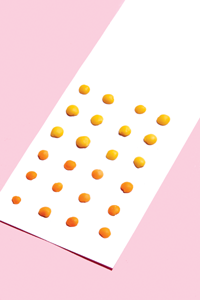
How to eat them
Lentil soup is delicious and filling, but cooked lentils are also a great addition to salads to give them more substance. If you still opt for the soup route, add some lemon juice or hot sauce to brighten up the earthy flavors.
Why they’re good for you
Lentils pack 18 grams of protein, 16 grams of fiber and less than 1 gram of fat per cup. They contain nearly 30% more folate than spinach, and they’re a good source of zinc and B vitamins. Regularly eating lentils may help guard against heart disease and stabilize blood sugar. And thanks to their iron content, lentils can support and maintain a healthy metabolism.
Nutrition
One cup of cooked lentils contains 16 grams of super-filling fiber.
 Mangoes
Mangoes
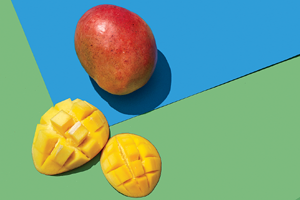
How to eat them
Mangoes pair nicely with citrus and fit in well with spicy flavors (think: mango salsa) as well as sweet ones (mango smoothie, anyone?). They’re an easy way to add something unexpected to a simple fruit salad too.
Why they’re good for you
This is a very versatile stone fruit, with colors that range from green with a reddish blush to bright yellow. Mangoes are also chock-full of vitamins and antioxidants, especially vision-protective vitamin A: one mango provides 45% of your daily value.
Nutrition
Mangoes are low in calories and sodium.
 Mint
Mint
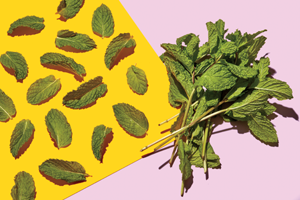
How to eat it
Add some shredded mint to a bowl of berries or to a grain-based dish for a new flavor. It’s also a nice way to perk up a simple green salad or a yogurt dip, especially when it’s paired with spicy foods.
Why it’s good for you
The aromatic herb has compounds in its leaves that have been used for centuries to treat digestive issues. Mint is also thought to have antimicrobial effects and antiviral effects, and the soothing herb lends a unique flavor to cooking and drinks. Various kinds—from spearmint to apple mint—share those benefits.
Nutrition
Compounds in mint have been shown in small studies to help with digestive disorders.
 Mushrooms
Mushrooms
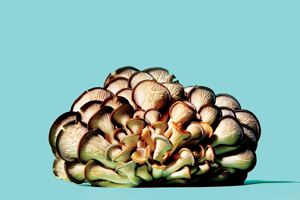
How to eat them
Use any variety of fungi in stir-fries, or substitute chopped-up portobello mushrooms for ground beef in tacos. Most varieties taste good thrown in at the last minute in any kind of mixed-vegetable soup or stew.
Why they’re good for you
Mushrooms are a rich source of ergothioneine, an antioxidant that may help fight cancer. They are also a source of riboflavin, a vitamin that supports the body’s natural detoxification mechanisms.
Nutrition
Mushrooms are the highest non-animal-derived source of vitamin D.
 Nutritional Yeast
Nutritional Yeast
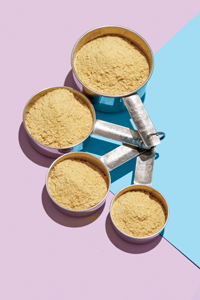
How to eat it
Some people call this flaky nutritional star “vegan parmesan,” but think of it more as a healthy B-vitamin-and-protein-laced umami bomb. It’s incredible on popcorn with a little olive oil and some spices. It’s also great as a thickener in pesto or in any vegetable puree, including cauliflower, mashed potatoes, or “creamed” kale or spinach.
Why it’s good for you
Come for the crazy good flavor (nutty, savory and somehow cheesy) and stay for the nutritional punch. Nutritional yeast is a complete protein, with all nine essential amino acids as well as zinc, selenium, B vitamins, protein and fiber. (Nutritional yeast is an inactive yeast that’s grown in a culture to make a seasoning rich in nutrients.)
Nutrition
Nutritional yeast is a good source of protein and B vitamins for vegetarians.
 Olive Oil
Olive Oil

How to eat it
Like garlic, olive oil should be a kitchen staple, and there are few dishes that couldn’t benefit from a dash. Use it to cook but also as a base for dressings or just a little added savory flavor.
Why it’s good for you
Due to its phenolic compounds, olive oil has anti-inflammatory properties. It’s also recognized for contributing to lower rates of heart disease and obesity. The extra-virgin variety retains the most number of antioxidants, since the oil comes from the first pressing of olives. No matter what variety is enjoyed, experts agree that olive oil has anti-cancer, cognitive, bone, cardiovascular and digestive health benefits.
Nutrition
Extra-virgin olive oil is a good source of unsaturated fat.
 Olives
Olives
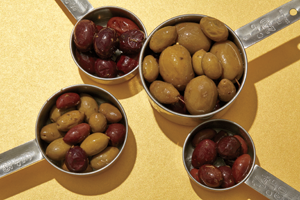
How to eat them
Pour them into a dish and serve, or slice them up and add them to any pasta recipe.
Why they’re good for you
We know olive oil is a common ingredient in a healthy diet, but don’t forget about its source. Olives are high in healthy fat that can benefit your heart and brain and keep weight in check. Research has also suggested that olives are a good source of antioxidants that prevent the buildup of bad cholesterol in artery walls. They’re also a fermented food, and therefore are a good source of gut-friendly bacteria.
Nutrition
Low in calories and high in healthy bacteria, olives are a healthy pre-meal snack.
 Onions
Onions
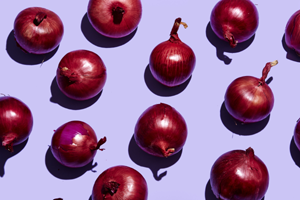
How to eat them
Everything tastes better if it’s sautéed with onions. Use a low or medium-high temperature to slowly cook them.
Why they’re good for you
Alliums like onions are rich in healthy sulfur-containing compounds (that’s what’s responsible for their pungent smell). Onions are a good source of vitamins C and B6, manganese, potassium and fiber. They’re also a superb source of the antioxidant quercetin. While research is inconclusive, quercetin is believed to aid in supporting heart health and combating inflammation.
Nutrition
Onions have a low amount of natural sugars, which give them their pleasant flavor.
 Oranges
Oranges
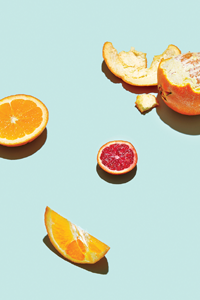
How to eat them
Toss together a citrus-herb salad with some oranges, grapefruit, arugula and parsley. Top with some walnuts or roasted almonds.
Why they’re good for you
Oranges are one of the most potent sources of vitamin C, which is essential for disarming free radicals, protecting cells and sustaining a healthy immune system. Oranges contain a powerful flavonoid molecule called hesperidin found in the white pith and peel. In animal studies, hesperidin has been shown to lower cholesterol and high blood pressure—so don’t peel all the pith from your orange. Consider adding zest from the skin to your oatmeal for a dose of flavor and health.
Nutrition
One orange contains more than 4 grams of fiber, which helps slow how quickly the sugar gets into your bloodstream.
 Oysters
Oysters
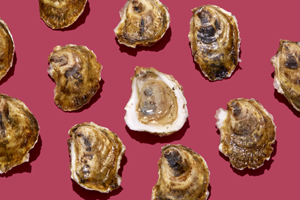
How to eat them
Learning how to shuck oysters makes for a great party trick—but if you’re knife-shy, stick with a half-dozen at happy hour instead.
Why they’re good for you
Oysters are a great source of protein, omega-3 fatty acids, iron, calcium, zinc and vitamin B12. B12 is important since it keeps the body’s nerve and blood cells in good health. Sadly, the data on their effectiveness as an aphrodisiac is less robust.
Nutrition
Oysters contain B vitamins and are a low-calorie protein source.
 Parsley
Parsley
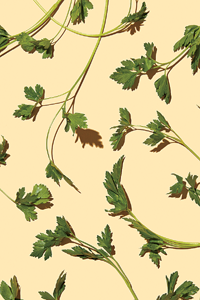
How to eat it
Buy a bunch on the weekend and use it on your dinners all week—it perks up pretty much any dish. Slice it super-thin and use it on top of pasta, mixed into salads, on top of a roasted chicken breast, in a pesto puree or on a quinoa- or couscous-based salad.
Why it’s good for you
Parsley is rich in many essential vitamins that play roles in bone, nervous system and immune health. This herb also contains flavonoids including apigenin, chrysoeriol and luteolin—which is thought to have anti-inflammatory effects. If you haven’t already, consider making parsley a kitchen staple.
Nutrition
This chlorophyll-filled herb is a low-everything way to add flavor to your dish.
 Pistachios
Pistachios
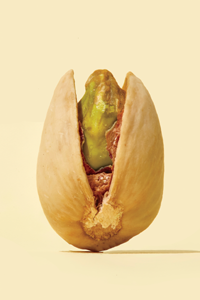
How to eat them
Keep pistachios in the fridge so you can regularly chop them up and toss them into salads, on top of roasted broccoli and even into soups.
Why they’re good for you
In addition to their heart-healthy fats, pistachios are rich in antioxidants, including lutein, beta-carotene and gamma-tocopherol. They are also high in vitamin A, which is important for vision and proper organ function. They’re delicious and surprisingly light for a nut.
Nutrition
For just 100 calories, you can eat 40 pistachios, making them an excellent snack.
 Pomegranates
Pomegranates
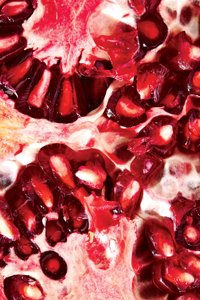
How to eat them
Slice one open, pick out the seeds and mix into Greek yogurt with a swirl of honey—or enjoy it on its own. They’re also an elegant topper for a salad.
Why they’re good for you
Pomegranates tend to have more vitamin C and potassium and fewer calories than other fruits. A serving provides nearly 50% of a day’s worth of vitamin C and powerful polyphenols, which may help reduce cancer risk.
Nutrition
Pomegranates are high in several different antioxidants.
 Popcorn
Popcorn
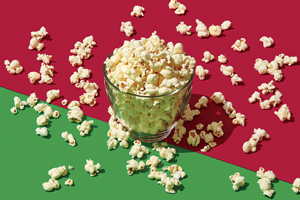
How to eat it
Try making your popcorn on the stove—it’s simple and fast. Instead of butter, sprinkle some parmesan and a little salt.
Why it’s good for you
Popcorn is a high-fiber food that should top your list of go-to snacks. We’re not talking about movie-theater popcorn—air-popped popcorn without lots of melted butter and salty seasonings is best. One study even suggested that popcorn is more satisfying than potato chips, possibly due to its irregular shape and high volume.
Nutrition
One cup, air-popped, has just 31 calories as well as some fiber.
 Pork Tenderloin
Pork Tenderloin

How to eat it
Mix a rub for your tenderloin with garlic powder, oregano, thyme and salt. When cooking pork tenderloin, make sure whole cuts have an internal temperature of at least 145°F and ground pork is 160°.
Why it’s good for you
Pork tenderloin is now certified with the American Heart Association “heart check” mark, indicating that it qualifies as an extra-lean and heart-healthy meat. Additionally, it is an excellent source of protein, B vitamins and zinc.
Nutrition
A 3-ounce serving offers about 25 grams of mostly lean protein.
 Poultry
Poultry
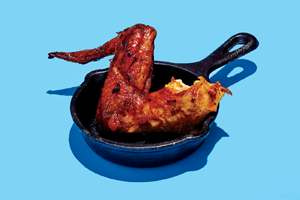
How to eat it
Cook some chicken thighs and drumsticks in a deep pot on the stove with vegetables like carrots and Swiss chard and some apple cider vinegar. Another option? A classic roast chicken, which is always worth the time it takes, because at the end you get leftovers—and the makings of an excellent soup.
Why it’s good for you
Light meat is a fine choice, but there’s no reason to be afraid of the dark. The fat in dark meat contains a hormone called cholecystokinin, or CCK, which is partly responsible for satiety, so a little bit of dark meat can go a long way, especially if you’re watching your weight. Furthermore, dark meat contains myoglobin, a protein that delivers oxygen to muscle cells. Meat from the leg and thigh are rich in taurine. Studies have shown that taurine can lower the risk of coronary heart disease in women, and it may also help protect against diabetes and high blood pressure.
Nutrition
Dark meat is a better source of B vitamins than white meat.
 Pumpkin
Pumpkin

How to eat it
Make a toasted-pumpkin-seed pesto. Throw the seeds in a food processor with basil, olive oil, parmesan, garlic and lemon juice. Or roast, puree and eat pumpkin as a side dish or mixed in with potatoes.
Why it’s good for you
Pumpkin is not just for carving. Its seeds are high in potassium and magnesium, and pumpkin flesh is rich in beta-carotene, which is good for the immune system. One cup of canned pumpkin contains 7 grams of fiber and 3 grams of protein, which is helpful for regular digestion. Pumpkin also contains 50% of the daily value of vitamin K, which helps with blood clotting.
Nutrition
One cup of mashed pumpkin has 3 grams of fiber—and a little protein too.
 Purple Cauliflower
Purple Cauliflower
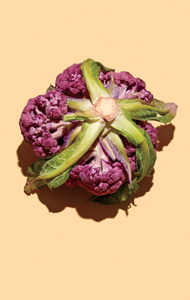
How to eat it
Make a mash. Roast it at 400°F, or simply steam it until tender, then add a glug of olive oil, salt and pepper and any fresh herbs you have on hand (dried herbs work too). Mash it all together with a fork, or use a food processor. Once you’re done, you’ll have a side dish that’s healthier and more elevated than mashed potatoes. You can also try stir-frying it to keep nutrient levels high.
Why it’s good for you
Like purple potatoes, the unexpected shade of this cauliflower comes from the antioxidant anthocyanin. Cauliflower is rich in vitamin C, folate, manganese and vitamins K and B6 (involved in metabolism and early brain development).
Nutrition
One cup contains fewer than 30 calories and almost no fat and is high in fiber.
 Purple Potatoes
Purple Potatoes
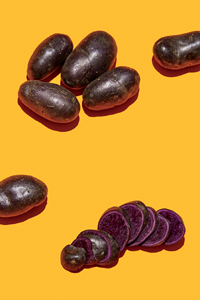
How to eat them
Slice them as thin as possible—use a mandoline if you have one—drizzle with olive oil, add some salt, and bake at 375°F until the edges are slightly brown and crispy. These jewel-toned potatoes dress up any plate. They also work well boiled and used in a potato salad.
Why they’re good for you
Like all spuds, purple potatoes are rich in potassium, which is needed for blood-pressure management. What’s special about purple potatoes is their color, which comes from a potent antioxidant linked to a lower risk for cardiovascular disease.
Nutrition
They contain a surprising amount of protein: 3 grams for one medium potato.
 Quinoa
Quinoa
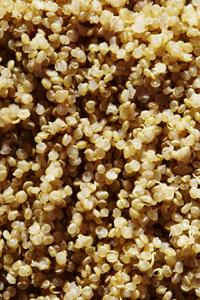
How to eat it
Instead of oatmeal, trying eating quinoa for breakfast. Cook the quinoa in some milk or water and top with maple syrup, chia seeds and blueberries.
Why it’s good for you
Quinoa is a seed rich in amino acids. Just one serving provides all nine essential amino acids, making it a good protein source for vegetarians and a healthy base for a meat-free meal. It also supplies anti-inflammatory phytonutrients and heart-healthy monounsaturated fatty acids, as well as vitamin E, zinc, folate and phosphorus.
Nutrition
You’ll get 8 grams of protein and 5 grams of fiber from just one cup.
 Raspberries
Raspberries

How to eat them
A bowl of raspberries makes a great snack, but if you’re feeling a little adventurous (and have a food processor), whip up a raspberry vinaigrette. Combine raspberries, olive oil, sugar, salt, pepper and raspberry vinegar and blend. Use it to top any salad—or even roast vegetables.
Why they’re good for you
Raspberries come in gold, black and purple varieties, but red are the most common. Research suggests that eating raspberries may help prevent illness by inhibiting abnormal division of cells and promoting normal healthy cell death. Raspberries are also a rich source of the flavonoids quercetin and gallic acid, which have been shown to support heart health and prevent obesity and age-related decline.
Nutrition
One cup has significantly more fiber than it does sugar, which prevents blood-sugar spikes.
 Raw Peanut Butter
Raw Peanut Butter
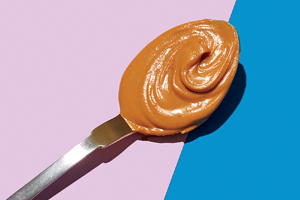
How to eat it
Peanut butter doesn’t require a lot of explaining; its deliciousness speaks for itself—and so does its nutritional profile. To get a little creative with it, spread a tablespoon onto an apple or a large whole-grain cracker and then dot it with hot sauce; put one or two tablespoons into an all-vegetable smoothie for added richness and fat; or swirl a small spoonful into your Greek yogurt.
Why it’s good for you
You shouldn’t opt for a low-fat version, because its relatively high fat content serves as a brake for your palate: you really can’t eat more than a tablespoon or two in one sitting. It’s high in filling fiber and protein. A little can go a long way.
Nutrition
It’s low in sugar and high in protein and healthy fat.
 Red Wine
Red Wine

How to drink it
Pour yourself a glass and enjoy. Moderation—as you know—is key when it comes to any kind of alcohol.
Why it’s good for you
Resveratrol, a polyphenol found in the skin of red grapes and in red wine, has been recognized for its antioxidant and anti-cancer properties. Scientists believe that the flavonoids found in red wine lower the risk of coronary artery disease by reducing clotting and bad cholesterol and boosting good cholesterol levels. The sweeter the wine, the fewer the flavonoids it contains. Cabernet, petit Syrah and pinot noir have the most.
Nutrition
One glass of dry red wine has 100 to 125 calories.
 Pomelos
Pomelos
 Pu-erh Tea
Pu-erh Tea
 Limequats
Limequats
 Hubbard Squash
Hubbard Squash
 Fenugreek
Fenugreek
 Purslane
Purslane
 Pluots
Pluots
 Wakame
Wakame
 Teff
Teff
 Celeriac
Celeriac
 Kombucha
Kombucha



 Mint
Mint

 Nutritional Yeast
Nutritional Yeast
 Olive Oil
Olive Oil


 Oranges
Oranges
 Oysters
Oysters




 Pork Tenderloin
Pork Tenderloin
 Poultry
Poultry


 Purple Potatoes
Purple Potatoes
 Quinoa
Quinoa


